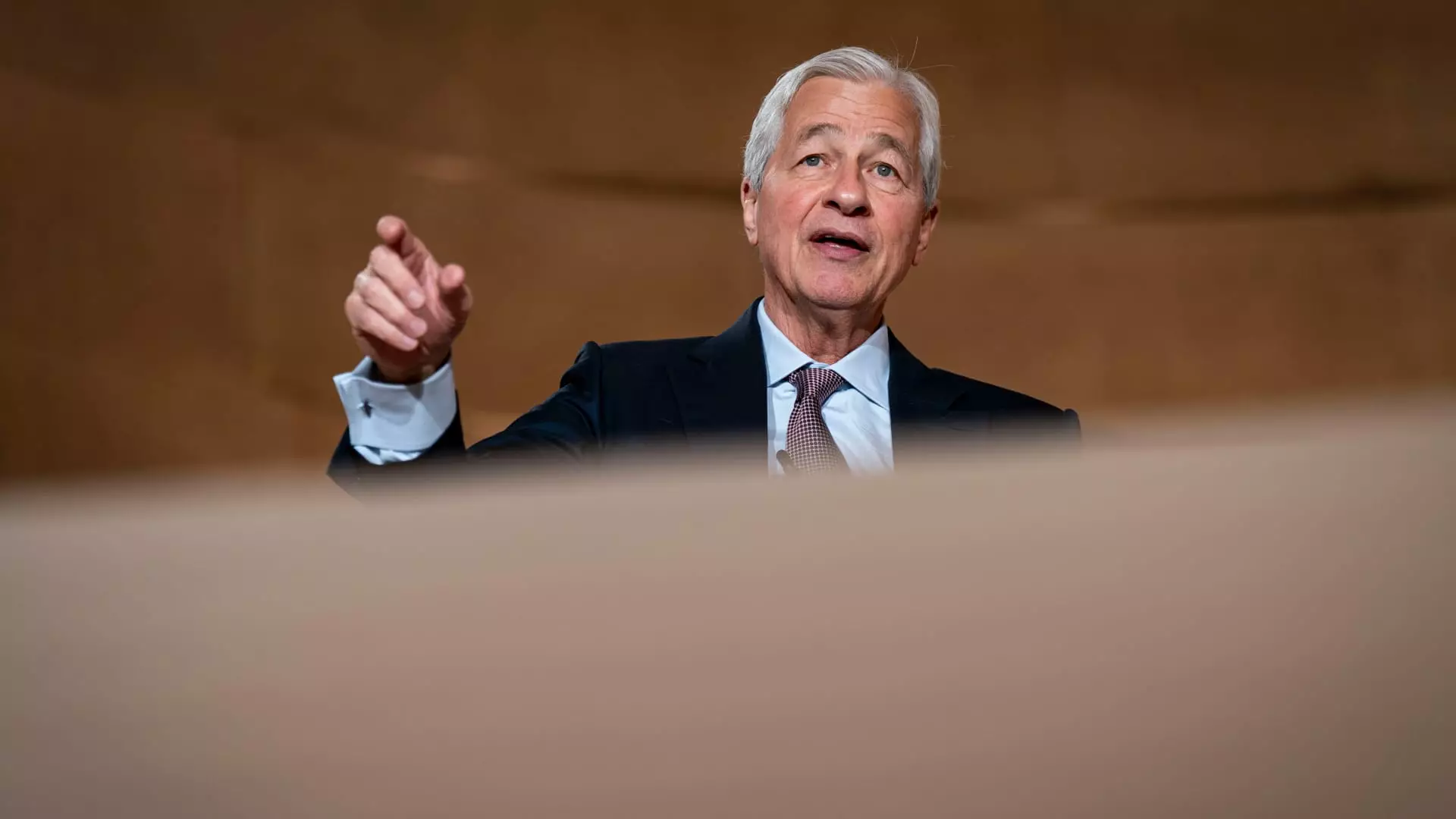In a recent address, Jamie Dimon, the stalwart CEO of JPMorgan Chase, unequivocally laid bare the significant and often understated risks looming over the U.S. economy. During the bank’s annual investor day in New York, he called attention to a dangerously complacent financial atmosphere, exacerbated by record deficits and misguided trade policies. His remarks are a clarion call to investors and policymakers alike—one that should not be dismissed lightly as merely the musings of a seasoned banking executive. In an era where the economy seems to be on the mend, Dimon bravely suggests that the signs of impending turmoil loom larger than they appear.
Rather than basking in the fleeting optimism of a rebounding market, Dimon’s thoughts reflect a critical perspective that pinpoint the latent threats of inflation and potential stagflation, which traditional economic indicators seem to gloss over. With stock prices rebounding after a previous dip, the market’s overzealous confidence casts a sinister shadow on economic reality. Dimon emphasizes this precarious balance; the sentiment is that while the market rallies, inflationary pressures continue to simmer, threatening the very foundation of perceived economic health.
The Fiction of Complacent Central Banks
At the center of Dimon’s critique lies our central banking system, which he argues has grown complacent in the face of evident risks. This assertion speaks to a more significant ideological conflict—one that pits traditional monetary policy against the uncertainties of today’s economy. Dimon presents a stark warning: “You all think they can manage all this. I don’t think they can.” This skepticism resonates deeply within the financial sector and calls into question the ability of central banks to wield enough influence to curb inflation or manage escalating deficits.
What remains disconcerting is Dimon’s suggestion that the market’s perception of risk appears dangerously optimistic—a potential ticking time bomb waiting to detonate when reality collides with expectation. If investors choose to ignore these dire signals, they may wake up to a financial landscape where asset values tumble and growth stagnates. The current market performance could be likened to a sugar high, deceptive and unsustainable, fostering an environment where bad decisions are excused and rationalized as acceptable risk.
The Reality of Potential Earnings Decline
Amidst this backdrop of precariousness, Dimon accurately forecasts dwindling earnings growth for S&P 500 companies, projecting that estimates will approach zero in just six months. This prediction is alarming and should send chills down the spine of investors who believe they are insulated from economic downturns. The implication here is clear: as corporations brace for financial headwinds, the ripple effects will inevitably reach shareholders, causing stock valuations to realign with reality.
Yet, the complacency of markets refuses to wane. Wall Street’s faith in optimism seems to veil the potential for a sobering economic contraction. When corporate profits shrink, and investor confidence falters, the repercussions can be far-reaching. Dimon’s financial intuition cuts through the noise and posits a stark reminder that economic buoyancy is not just about market corrections but about being fundamentally anchored in financial accountability and realism.
A Culture of Caution Among Corporations
Troy Rohrbaugh, Dimon’s deputy, has painted a portrait of corporate clients holding back on acquisitions and investments in this uncertain climate. It serves as further affirmation that even behind the towering skyscrapers of Wall Street, there exists a palpable sense of unease. The investment banking sector is bracing itself for a notable decline, a sign of palpable caution that stands in stark contrast to the vibrancy projected by retail investors and market analysts.
While Dimon and his team provide substantial insights, it’s worth considering the cultural implications of their warnings. The reluctance to make definitive moves in corporate transactions mirrors a broader societal hesitation to embrace risk in an environment where economic disarray is looming larger. In refusing to act, companies may inadvertently hinder their own growth prospects, undermining the very stability they strive to achieve. In a world that celebrates innovation and disruption, it becomes imperative to ask if our cautious approach to potential pitfalls is curbing transformative progress.
In the end, Dimon’s clarion call might not be just a plea for awareness; it’s an urgent reminder that markets can shift, fortunes can change, and complacency—both in thought and action—can lead to perilous consequences. As we navigate through this tumultuous economic landscape, let us not become prisoners of our own optimism, ignoring the critical warning signs that Dimon so vividly expresses.


Leave a Reply